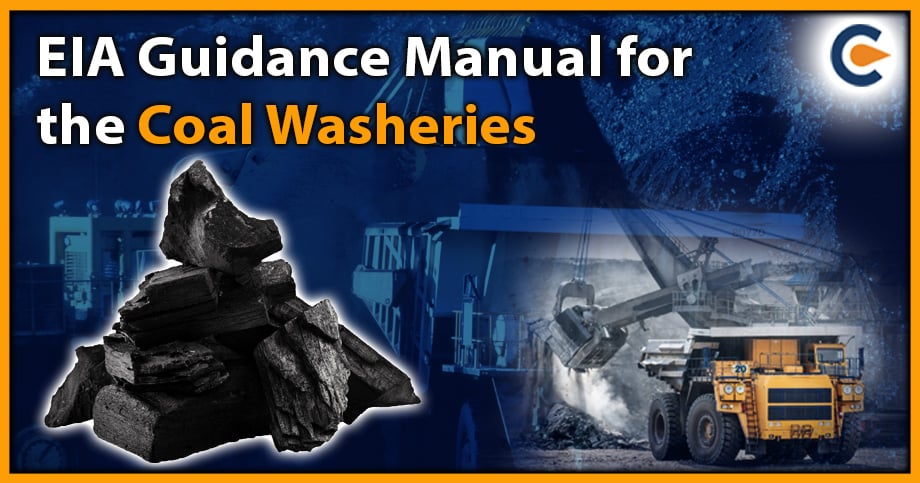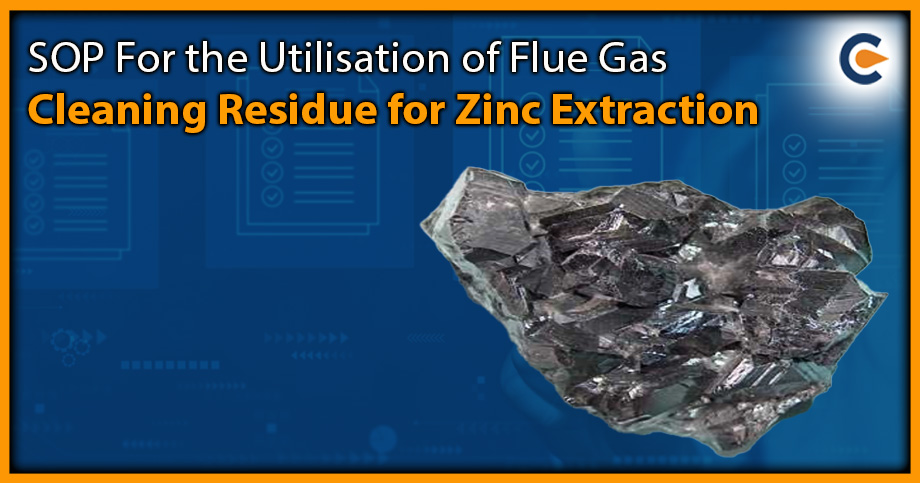Coal Washeries are very important for the country’s long-term growth. Recognizing its significance, the Government of India’s Ministry of Environment and Forests developed policies and procedures governing industrial and other developmental activities to prevent indiscriminate exploitation and promote incorporating environmental concerns into development projects. With a notification published on September 14, 2006, and revised on December 1, 2009, the Ministry of Environment and Forest made prior Environmental Clearance (EC) for specific developmental projects necessary. Coal-fired power stations will continue to play an essential part in our country’s electricity generation. Coal-fired power facilities provide around 70% of the country’s electricity. The quality of the coal is critical to the environmental issues of a power plant. The quality of Indian coal is primarily due to its origin. Inorganic contaminants are deeply integrated into the coal matrix due to the drift origin of Indian coal, resulting in complex beneficiation characteristics. According to the CPCB data, almost 200 million tonnes of coal reach consumers with an ash percentage average of 40%.
Benefits of Using Washed Coal
The benefits of using washed coal are as follows:
- Improved generating efficiency.
- Plant availability gets increases.
- Lower investment costs.
- Lower operation and maintenance (O&M) expenses as a result of less wear and lower fuel and ash handling costs.
- Lower transportation costs and energy saving in the transportation industry
- Impurities are reduced, and coal quality is enhanced.
- Less strain on the air pollution control system; and
- The amount of solid trash that must be disposed of is reduced.
Coal Washeries primarily focus on separating impurities using physicochemical methods based on variations in the specific gravity of coal elements as well as differences in surface qualities of the coal and its mineral content. The properties of coal preparation plant waste are heavily influenced by the raw coal used and the finished product.
The discharge of coal washery effluents causes considerable visual and aesthetic degradation. In general, the appearance of these effluents during release from the outlet of washery facilities is black/brownish-black in colour, with high turbidity and a large load of suspended particles, mainly in the form of coal fines.
Coal Cleaning method in Coal Washeries
The techniques are roughly called ‘Wet’ and ‘Dry’ processes. The dry method does not utilize water, whereas the wet process uses water as the primary medium for washing and jigging.
- Crushing
The purpose of crushing is to decrease the Run of Mine (ROM) coal to a size appropriate for washing, and size reduction involves a variety of concepts such as compression, impact, shearing, splitting, and attrition.
- Primary crushers are typically intended to accept ROM coal and crush it to a top size of 2″ to 8″.
- Secondary crushers are typically intended to lower the size (to a top size of 1 34″) of the middling fraction from jigs or the middling fraction from heavy – medium trough separators and then rewash these fractions.
- Screening
Screening divides a heterogeneous mixture of particle sizes into groups in which all particles have a maximum and lowest size.
Screens for Coal Preparation:
- Scalping screen – used to separate trash and fines before size reduction.
- Raw coal sizing screen- used to separate raw coal into coarse and fine particles for subsequent processing.
- Pre-wet screen- used to eliminate particles before mechanical cleaning.
- Heavy media recovery screens- for magnetite recovery and reuse
- Desliming screens remove severe particulates, whereas dewatering screens are used to remove water.
- Dense Medium Separators
Specific gravity difference is also employed in dense-medium vessels; however, a magnetite suspension and water are used instead of water as the separating medium. This suspension has a specific gravity between that of coal and trash, allowing for better separation. A thin magnetite slurry in water can reach relative densities of up to 1.8. Dense-medium separators employ a variety of containers, including baths, cyclones, and cylindrical centrifugal separators. Several types of baths are employed for bigger particle sizes; however, these require a significant amount of dense medium and hence magnetite. For smaller sizes, cyclones are used where the residence time is short and throughput relatively high. Cylindrical centrifugal separators are used for coarse and intermediate coal. Dense-medium cyclones clean coal by accelerating the dense-medium coal and refuse by centrifugal force. The coal Washeries exit the cyclones from the top and the refuse from the bottom. Better separation of smaller-sized coals can be achieved by this method.
- Hydrocyclone
Hydro-cyclones are water-based cyclones that collect heavier particles along the walls and remove them via the base cone. Lighter (cleaner) particles remain closer to the centre and are eliminated by the vortex finder at the top.
- Concentration Tables
Concentration tables are titled and ribbed, moving horizontally back and forth. The lighter coal particles sink to the table’s bottom, while the heavier trash particles gather in the ribs and are transported to the table’s end. This device can clean fine coal at a low cost, but its limited capacity is only adequate on particles with specific gravities larger than 1.5.
- Froth Flotation
The most common method for cleaning particles is froth flotation. Froth flotation cells make use of differences in the surface properties of coal and refuse to purify ultra-fine coal. The coal-water combination is chemically conditioned such that air bubbles stick exclusively to the coal and float it to the top while reject particles sink. The slurry in the cell is bubble dumped, and clean coal is recovered in the froth that forms the top.
- Dry Cleaning
The dry coal preparation process employs an air-dense fluidized bed, which makes use of the properties of an air-solid fluidized bed-like liquid. A consistent and stable air-solid suspension is generated, which processes a specific density; light and heavy feed are separated by density in suspension. The low-density material rises to the surface, while the high-density stuff sinks to the bottom. After separating and eliminating the magnetic, two qualified items are produced.
- Launder
A trickle of water feeds raw coal into the top end of a trough. When the coal and water stream travels down the incline, particles with the highest settling rate sink into the stream’s lower strata. These are the middling particles, often known as waste particles. Before separation, the clean coal particles tend to the top layers.
Environmental Clearance Process
The Environmental Clearance process for Coal Washeries will comprise the following four stages. These stages are in sequential order:
- Stage (1) – Screening (only for category – B projects)
‘Screening’ refers to Category ‘B’ projects or activities, the process by which the SEAC examines an application for EC in Form 1 to determine whether the project or activity requires additional environmental studies for the preparation of an Environmental Impact Assessment (EIA) or not for its appraisal before the grant of environmental Clearance, depending on the nature and location specificity of the project. The projects that require an Environmental Impact Assessment report will be designated as Category ‘B1,’ while the remaining projects will be categorized as Category ‘B2’ and will not require an EIA report. Except for item 8 (a), new guidelines from the Ministry of Environment and Forests must be followed for project categorization into B1 or B2.
- Stage (2) – Scoping
‘The process by which the EAC, for category ‘A’ projects or activities, and the SEAC, in the case of category ‘B1’ projects or activities, determine detailed and comprehensive TOR addressing all relevant environmental concerns for the preparation of an EIA report in respect of the project or activity for which prior Environmental Clearance is sought is referred to as scoping. The EAC and SEAC concerned shall determine the TOR based on the information provided in the prescribed application Form 1, including the TOR proposed by the applicant, a site visit by a sub-group of EAC only if deemed necessary by the EAC or SEAC concerned, and any other information that may be provided.
- Stage (3) – Public Consultation
The term “public consultation” refers to ascertaining the concerns of locally affected citizens and those who have a plausible stake in the environmental effect of the project or activity to include all material issues into the project or activity design as appropriate. Following the conclusion of the public consultation, the applicant must address any substantial environmental concerns raised during the process and make the necessary adjustments to the draught EIA and EMP. The applicant must submit the final EIA report to the relevant regulatory body for evaluation. Instead, the applicant may submit a supplementary information to the draught EIA and EMP that addresses all the issues raised during the public consultation.
- Stage (4) – Appraisal
The EAC thoroughly examines the application and other documents, such as the final EIA report and the results of public consultations, including public hearing processes, submitted by the applicant to the regulatory authority involved in the grant of EC.
Validity of Environmental Clearance
The previous Environmental Clearance given is valid for five years. The regulatory authority may prolong the validity term by up to five years.
Generic Structure of Environmental Impact Assessment Document
According to the MoEF, GoI’s EIA announcement, the generic format of the EIA document will be as specified below:
- Introduction
- Project Description
- Environment Description
- Anticipated Environmental Impact & Mitigation Measures Alternatives Analysis (Technology& Site)
- More Research for the Environmental Monitoring Program
- Analysis of Environmental Costs and Benefits
- Environmental Management Strategy (EMP)
- Conclusion & Synopsis
- Consultants Involved Disclosure
Approval/clearance required under the following acts should be expressly stated:
- The Forest (Conservation) Act, 1980[1]
- The Wildlife (Protection) Act, 1972
- The CRZ Notification, 1991
In case of expansion/modernization of the project, the environmental compliance status for the existing project should be furnished for the following:
The current project’s environmental clearance status and compliance with the terms and conditions
Validity of SPCB/PCC Air & Water Consent Orders and Hazardous Waste Authorization (HWA) for the current project
SPCB/PCC compliance status with Standards and particular criteria
Notices/directions issued by regulatory bodies in the recent year under section 33(A) of the Water Act, 1974 as amended, section 31(A) of the Air Act, 1981 as amended, and any directions made under the provisions of the E (P) Act, 1986
Compliance status for the instructions/enactments that are binding on project activities as per notifications given from time to time by regulatory bodies
Conclusion
India’s coal consumption is predicted to rise as additional coal-fired power plants are built and demand from metallurgical and other sectors. Drift coals from India might include up to 40% ash in rare situations. As a result, before being used by businesses, coal must be cleaned in Coal Washeries plants to reduce the ash concentration to an acceptable level. Coal Washeries procedures, if not managed appropriately, have the potential to generate enormous amounts of pollutants and pollute the air, water, and land.
Read Our Article: Overview Of EIA Guidelines For Development Projects











